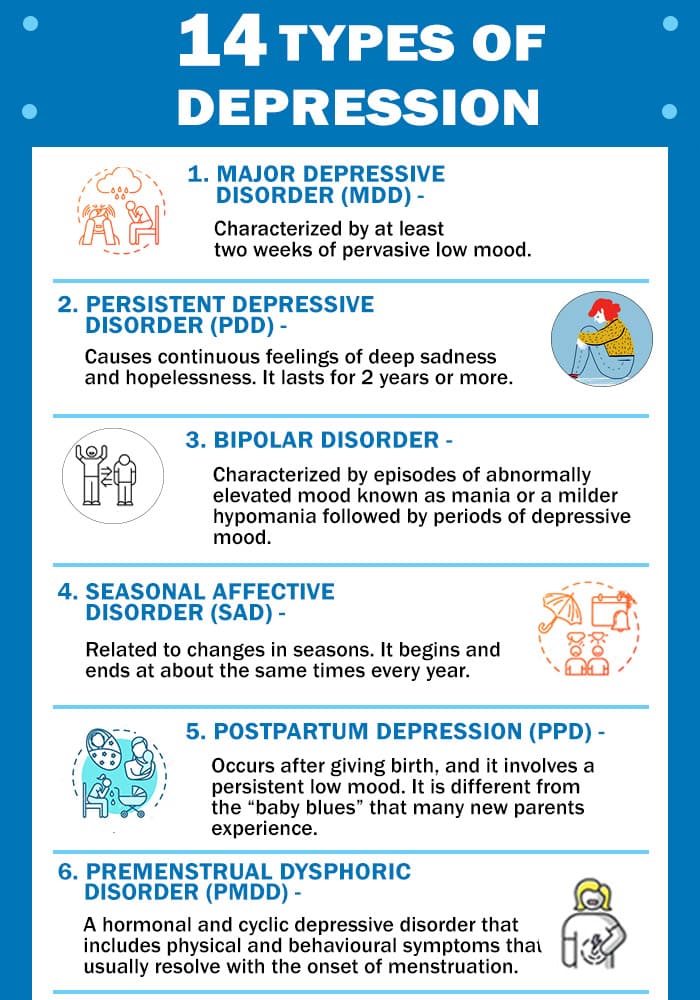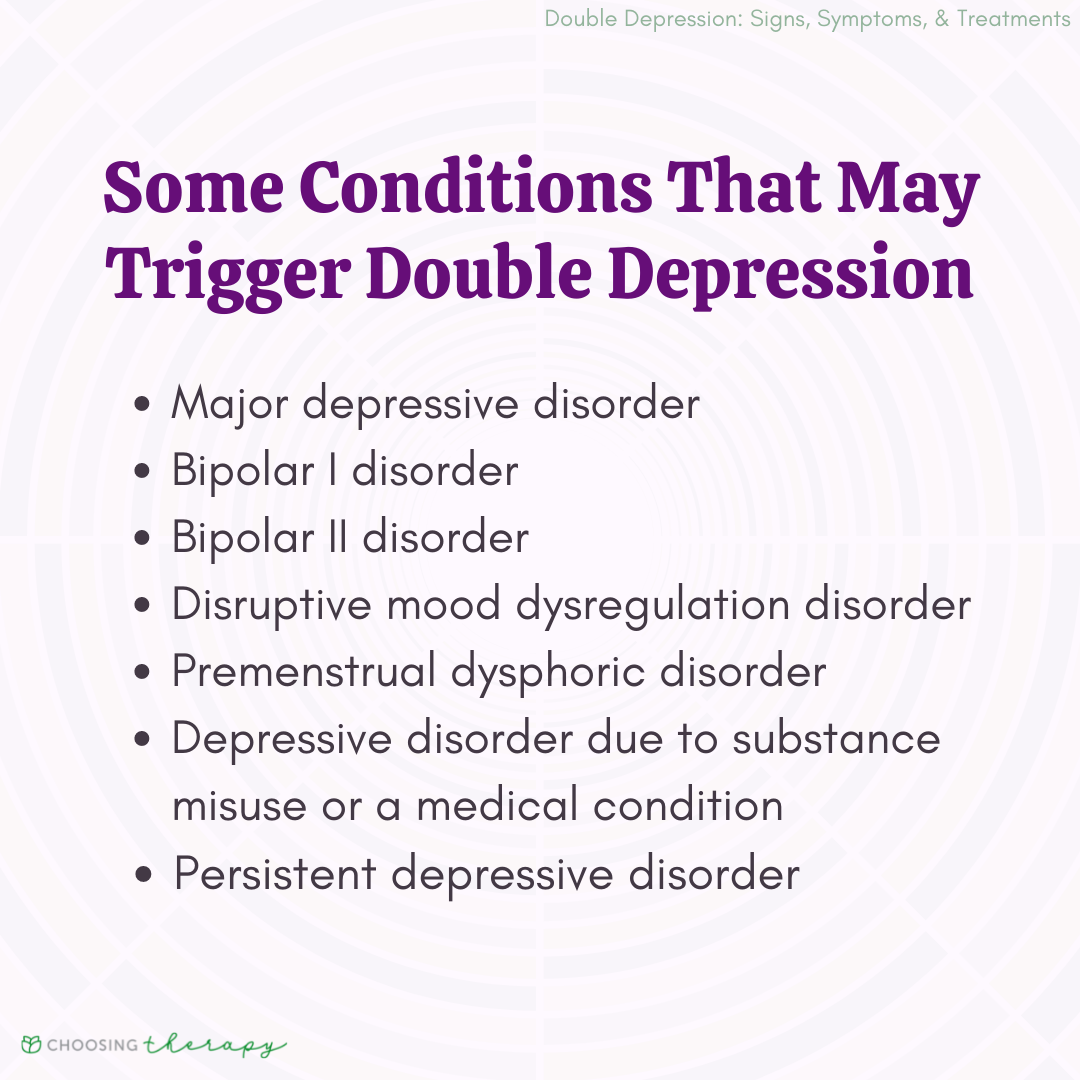Which of the Following Best Describes Persistent Depressive Disorder
Persistent depressive disorder is a pretty new clinical diagnosis that describes long-term feelings of sadness and listlessness that dont quite meet the diagnostic criteria for major depressive. Persistent depressive disorder known as dysthymia or low-grade depression is less severe than major depression but more chronic.

Depression 14 Types Of Depression
Claire suffers from dissociative identity disorder and exhibits traits of schizophrenia as well.

. Major depressive disorder MDD has been ranked as the third cause of the burden of disease worldwide in 2008 by WHO which has projected that this disease will rank first by 20301 It is diagnosed when an individual has a persistently low or depressed mood anhedonia or decreased interest in. Persistent Depressive Disorder b. Depressed mood is present for at least 2 years.
For this module view the following disorders. It has also been called dysthymia or chronic major depression Symptoms of PDD often develop slowly. B A type of mania more common in dysthymic patients.
Which of the following diagnostic criteria for persistent depressive disorder in adults. A person diagnosed with persistent depressive disorder may have episodes of major depression along with periods of less severe symptoms but symptoms must last for two years to be considered persistent depressive disorder. The symptoms last most of the day on most days over a long period of time.
D All of the above. 3 points A severe intermittent form of depression A form of depression that affects biological functions such as appetite A mild chronic form of depression A form of depression that is very responsive to electroconvulsive therapy A mild consistent form of mania. There you will see twelve different disorders listed.
The previous occurrence of at least one Major Depressive Episode Manic Episode or Mixed Episode. Persistent Depressive Disorder previously known as Dysthymia is a continuous and chronic form of depression. Which of the following best describes persistent depressive disorder.
A psychological disorder characterised by periods of mania that alternate with periods of depression. It may be less severe than major depression but as the name suggests it lasts longer. A A type of mania that alternates with depression.
Persistent Depressive Disorder Dysthymia According to the Diagnostic and Statistical Manual of Mental Disorders Fifth Edition Persistent Depressive Disorder Dysthymia represents a consolidation of the DSM-IV-defined chronic major depressive disorder and dysthymic disorder commonly referred to as Dysthymia 1. Dysthymia Persistent Depressive Disorder Dysthymia also known as persistent depressive disorder is a long-term form of depression that lasts for years and can interfere with daily life work and relationships. It occurs twice as.
Persistent depressive disorder dysthymia is a form of depression. A neurodevelopmental disorder that is marked by persistent problems in maintaining attention and difficulty engaging in quiet activities is ____ ADHD An ____ ____ is a psychological disorder in which an individual has an irrational overwhelming persistent fear of a. Healthcare providers used to call the condition dysthymia or dysthymic disorder.
Major Depressive Disorder-Chronic Subtype and Dysthymia have been combined into the new diagnosis of _____ in the DSM-5. Major Depressive Disorder - StatPearls - NCBI Bookshelf. It is a form of depression that is mild in intensity but longer in duration.
Access the Faces of Abnormal Psychology website. Which of the following best describes hypomania. O A African Americans have higher rates of PTSD compared to Whites Hispanics and Asian Americans.
C Mood episodes are not better accounted for by psychotic disorders. Learn about the differences including symptoms and treatment methods here. Major Depression Bipolar Disorder Persistent Depressive Disorder Dysthymia Assignment 3.
Which of the following best describes persistent depressive disorder. Persistent depressive disorder also called dysthymia is a depressed mood that lasts for at least two years. D Which of the following statements is true about cross-cultural and gender differences in posttraumatic stress disorder PTSD symptoms.
Many people with this type of depression describe having been depressed as long as they can remember or they feel they are going in and out of depression all the time. While the symptoms of Persistent Depressive Disorder are very similar to Major Depressive Disorder they are usually less acute as symptoms tend to ebb and flow over a long period of time more than two years. Major and persistent depressive disorders are two common forms of depression.
Which of the following diagnostic criteria for persistent depressive disorder in adults. 0803 LC Which of the following best describes persistent depressive disorder. Persistent depressive disorder.
Which of the following scenarios best describes a manic episode. Describe any symptoms that you have observed that support the diagnosis. Major depressive disorder is less severe and more chronic than persistent depressive disorder.
It is a form of depression that is mild in intensity but longer in duration. Persistent depressive disorder PDD is mild or moderate depression that doesnt go away. A person with PDD has a sad dark or low mood and two or more other symptoms of depression.
Persistent depressive disorder PDD is a mood disorder of continuous feelings of low-level sadness over a long period of time. Its essential feature is depressed mood for most of the day and for more days than not. Formerly called dysthymia this type of depression refers to low mood that has lasted for at least two years but may not reach the intensity of major depression.
It usually starts in adolescence or young adulthood. Select all that apply Its essential feature is depressed mood for most of the day and for more days than not. Many people with this type of depression type are able to function day to day but feel low or joyless much of the time.
People with dysthymia often find it difficult to be happy even on typically joyous occasions.

What Is Double Depression Signs Symptoms And Treatments

What Is The Difference Between Persistent Depressive Disorder And Major Depressive Disorder Youtube
No comments for "Which of the Following Best Describes Persistent Depressive Disorder"
Post a Comment